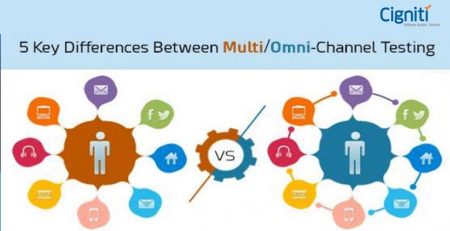Retail Unified Commerce: Strategies, Benchmarks, and Cloud-Powered Triumphs
52% of customers pay more for a product if they anticipate an easy shopping experience – PWC
Adyen’s research reveals a $3.3 trillion global opportunity, representing the potential revenue shift from negative to positive shopping experiences for retailers.
Businesses that excel in tailoring services to meet customer needs and desires are adept at offering personalized recommendations and support throughout the entire buying journey. What other strategic approaches might elevate the customer experience to new heights in exploring alternatives to unified commerce?
What is Unified Commerce?
Unified Commerce seamlessly integrates all business operations and channels for a consistent customer experience, distinct from omnichannel retailing. This strategy centralizes all channels onto a single platform, ensuring a uniform quality of service across online, mobile, in-store, and social media interactions. Achieving this requires the integration of technologies like POS systems, e-commerce platforms, inventory management, and CRM tools, facilitating real-time access to crucial data.
Components of Unified Commerce
Executing unified commerce is a nuanced challenge, with the integration of four essential components driving its complexity. Achieving a seamless unified commerce system involves navigating the intricacies of interactions, channels, systems, and product consistency.
Customer Interactions
In e-commerce and retail, customer satisfaction hinges on vital elements like speed, consistency, personalization, and user-friendly experiences. Unified commerce ensures these factors remain unwavering, catering seamlessly to customers whether they shop online or in person. Simplifying the customer journey, the unified commerce approach involves storing payment details, eliminating repetitive data entry hassles, and ensuring a smooth and efficient experience.
Various Channels
Unified commerce guarantees a seamless customer journey across various channels, eliminating obstacles in navigating product catalogs and purchasing. Whether on mobile or desktop applications, customers experience a consistent process, ensuring smooth sailing throughout their shopping endeavors. This approach demands uniformity in the steps and product information, fostering a cohesive experience regardless of the channel.
For instance, if a 40% sale is offered on specific items via the mobile application, the redemption of the sale should seamlessly extend to the desktop version. This coherence in promotional accessibility underscores the effectiveness of unified commerce in creating a unified and hassle-free shopping experience across diverse platforms.
Different Systems
In systems integration within an e-commerce platform, cohesion is paramount. POS, orders, finances, reports, and data must harmoniously unite to form a centralized structure. This entails seamless connectivity between the customer-facing end and the back-end platform.
For instance, ensuring uniformity, sizes, and prices of products across diverse channels demands consistency, illustrating the need for changes in one system to reflect promptly across all others.
Various Products
Ensuring an optimal customer experience hinges on delivering precise and consistent product information across all channels. A proficient inventory management tool is crucial, efficiently presenting product details and seamlessly integrating updates as needed.
Consistency is paramount; if a customer verifies product availability through support after viewing it on your website, the support team must deliver a coherent and aligned response for a seamless customer experience.
Retailers implementing unified commerce strategies consistently outperformed their counterparts, demonstrating a notable 3X to 6X performance advantage – The 2023 Unified Commerce Benchmark report.
Benefits of Unified Commerce
Embarking on the unified commerce journey opens doors to a transformative approach seamlessly integrating all business channels. This holistic strategy streamlines operations and delivers many benefits, enhancing customer experiences and overall business performance.
Optimize Your Inventory Better: Centralized data in one location facilitates improved inventory management, minimizing risks of overselling as synchronization occurs between the front and back ends.
Seamless Communications Among Teams: Real-time data updates foster seamless communication among teams, ensuring each endpoint is interconnected and informed about the ongoing processes. This minimizes the likelihood of mix-ups and miscommunications, enhancing overall team coordination and efficiency.
Hassle-free Process for Order Fulfillment: Unified commerce streamlines multi-warehouse operations, enabling efficient product tracking. If a product is unavailable in one warehouse, the unified system facilitates locating its availability elsewhere, allowing for seamless order fulfillment through strategic shipping adjustments. This enhances inventory management and order fulfillment flexibility.
Better Data Collection and Usage: Unified platforms facilitate efficient data collection, enabling organizations to gather and store customer information effectively. This streamlined process ensures accurate presentation to teams, paving the way for personalized experiences at every customer touchpoint. The key to individualized customer personalization lies in the seamless data management provided by unified platforms.
Elevating Unified Commerce Prowess Through Cloud Brilliance
A robust unified commerce strategy hinges on the essential role of the cloud. Modern cloud architecture enables seamless integration across channels and locations, fostering communication between infrastructure components through APIs and microservices. This comprehensive approach enhances data handling, systems, and payments, ensuring a cohesive and efficient unified commerce execution. The cloud is pivotal in orchestrating a unified and interconnected commerce ecosystem.
Conclusion
Cigniti’s Cloud Migration Assurance and API testing services fortify businesses by ensuring robust cloud computing practices. Their expertise in cloud migration and API testing contributes to building resilience within the business infrastructure. Cigniti is crucial in making cloud adoption a dependable and enduring aspect of modern business operations.
Need help? Contact our Retail and Cloud Migration Assurance experts to learn more about the Strategies, Benchmarks, and Cloud-Powered Triumphs of Retail Unified Commerce.




Leave a Reply